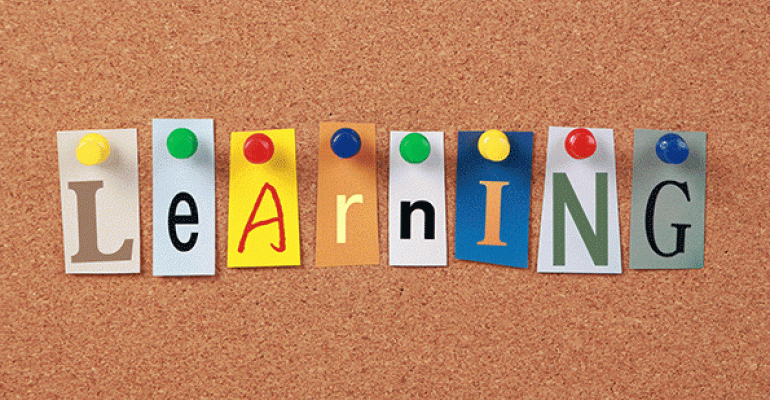In this article, the third in a three-part series based on a recent MeetingsNet webinar, Velvet Chainsaw’s Executive Vice President of Education and Engagement Jeff Hurt provides 10 insights that will help you align your educational activities with the needs of your healthcare professional learners. In part one of the series, Hurt outlined six trends that are driving change in healthcare today. In part two, he explained how continuing healthcare professional development must shift to meet the needs of today’s HCPs. Also, check out the Learner’s Bill of Rights that Hurt and the audience developed during the webinar.
10 Education Techniques that Work
1. Make the learning process social.
Your on-site instruction needs to include interaction among the learners to effectively teach complex content. Lectures do not suffice for today’s HCPs, who are now being asked to continually improve their performance in practice and their patients’ health. “It’s in the give-and-take that the learning takes place,” said Hurt. Small-group discussion is a better way to reinforce learning that will lead to practice improvement than lecture.
Even keynotes are now becoming more interactive when the goal is to educate, as opposed to just inspire, he added. “The pair-share [where the audience divides into groups of two to discuss a point made in the lecture] scales well—I’ve done them in general sessions of 12,000 people.”
2. Integrate group learning, because learning in groups helps HCPs perform better as individuals.
Educational research shows that group learning improves individual behavior, even when individuals are not learning with people who are actually in their practices. They’re much more successful at using what they’ve learned when they go back home because the group members reinforce and maximize their own and each other’s ability to learn, said Hurt.
“This is critical,” he said. “Most medical meetings are about knowledge production and delivery. We need to move to a more social learning model, because we’re moving to cross-disciplinary care. Often medical professionals from several fields have to collaborate. Are we giving them the tools to be effective collaborators?”
3. Ensure that faculty focuses less on presenting content and more on helping learners understand how to apply the content to their practices and patients.
“We need to help our presenters become better at facilitating learning,” said Hurt. It’s not enough to have HCPs running from session to session to collect information that they do nothing with afterward. Faculty need to address how learners can disseminate information to their practices, teach their patients, and collaborate with their teams to use the new knowledge.
4. Allow HCPs to receive ample feedback from peers, colleagues, and experts during learning experiences.
This is often missing from HCP CPD, which is why the best learning tends to happen in the hallways, said Hurt. Bring that interaction into the actual session room and make it a part of the content.
5. Help attendees understand that just collecting information is no longer enough. They need to know why it’s important for them also to be able to draw conclusions, disseminate it to others, and collaborate in the use of that information back at their practices.
6. Engage HCP learners so they are active participants in the learning process—not mere listeners. Cognitive load limits are about 10 minutes, said Hurt. “If the presenter can give them one or two minutes to share their thoughts about the content every 10 minutes, you’ve used a good adult education practice.”
7. Simulations must reflect what the HCP learners experience in their practices, and the patient communities they serve. Simulation is an effective educational tool, but only when it simulates something the learner will experience in practice.
8. Include a session dedicated to improving HCP leadership (personal, organizational, inter-organizational, and visionary).
Hurt said that a dearth of HCP leadership is one of the more troubling trends in healthcare today. “We need to help HCPs be better leaders.”
9. See the future of all medical meetings content through the lens of the user.
Don’t base the session length on how long it’ll take to get the content out. Base it on how long it will take for the learners to make sense of it and find ways to apply it, he said.
10. Understand that content is only valuable when it is put to use.
Ask learners what they are taking away from the session and how they will apply it to their practices post-conference.





